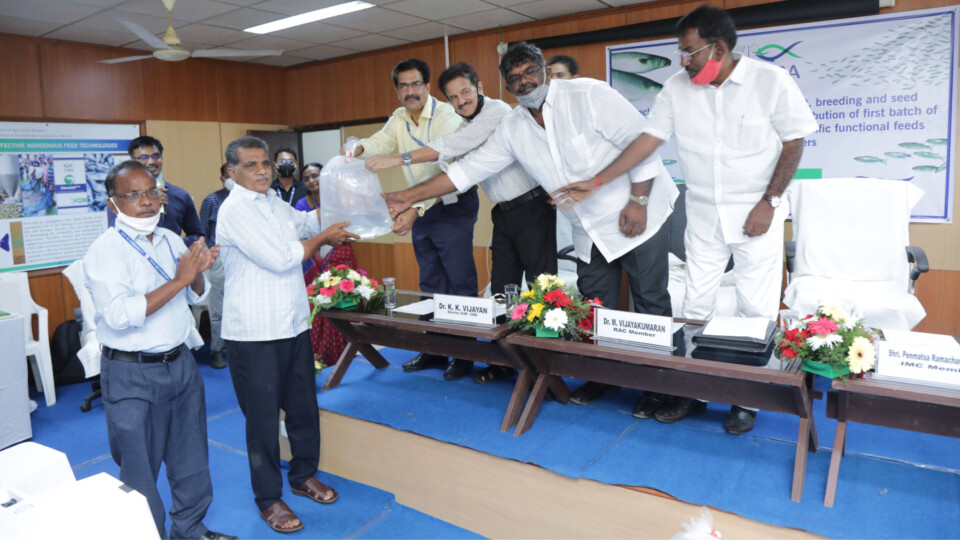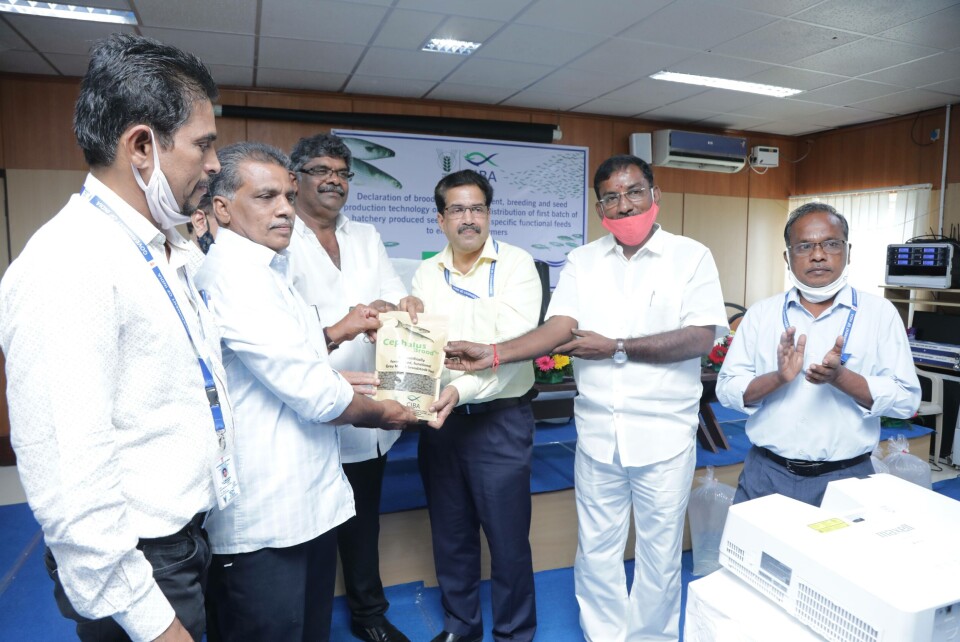
Breeding breakthrough for Indian aquaculture
India’s Central Institute of Brackishwater Aquaculture (CIBA) has successfully bred grey mullet (Mugil cephalus), a high-value commercial fish, for the first time in the country.
Grey mullet is the preferred choice of consumers due to its taste, texture, fewer spines and nutritive value. The fish’s popularity with consumers means it fetches a good market price in the range of 350 to 400 Rupees (£3.50 to £4) per kg.
Attempts to develop captive breeding technology were initiated in 1980s, but maturation and breeding was not successful. One of the primary reasons is related to the grey mullet’s short annual reproductive period, which is limited to a few weeks during the monsoon season.

Third batch
Because of the grey mullet’s significance in brackishwater aquaculture, CIBA has put greater efforts into breeding since 2015.
Successful breeding and larval production were achieved using pond-reared broodstock in 2016-17, and this season by December-January, CIBA had completed producing its third batch of hatchery-reared grey mullet fingerlings.
CIBA, part of the Indian Council of Agricultural Research (ICAR), has now taken the next step by giving hatchery-produced fingerlings to fish farmers from Andhra Pradesh, Tamil Nadu and Kerala. The fish will be raised in their farms and developed into broodstock, which will be brought back to the CIBA hatchery for further breeding and fingerling production.
A cherished fish
The success of the breeding programme was officially announced last week by CIBA at a stakeholder meeting organised at Muttukadu Experimental Station, Chennai, at which the fingerlings were given to farmers.
Dr Joykrushna Jena, deputy director general (fisheries) of ICAR, said that mullet had always been a cherished fish and historically a part of brackishwater aquaculture, It was amenable for farming in different culture systems and salinity.
He also mentioned that currently brackishwater farming is largely dominated by single shrimp species and CIBA’s recent efforts towards diversification with species such as Asian seabass, milkfish and grey mullet were fundamental for the sustainable development of the sector.
Narrow window
CIBA director Dr KK Vijayan emphasised that finfish breeding technology required scientific backstopping in the form of breeding biotechnology, feed development and fish health support, and those had helped to close the life cycle of grey mullet after decades of research.
He highlighted the importance of raising hatchery-bred grey mullet juveniles into F1 (first filial) broodstock to counter the biological challenge of a single narrow breeding window. This is one of the main stumbling blocks in the path towards grey mullet hatchery production.

Indigenous feed
To help the breeding programme, indigenous pellet feeds for broodstock, larvae, nursery fish and grow-out fish have been formulated, and during the event, CIBA released two - Cephalus BroodPlus (for broodstock) and Cephalus NurseryPlus (for nursery fish).
Grey mullet, which are omnivorous and feed primarily on detritus and benthic micro-algae, are efficient converters of dry formulated feeds into quality fish protein.
They are the fasting growing of the mullet species, increasing in size by 500-600g in 5-6 months.
Referring to the breeding programme, Jena said: “This is a great achievement by CIBA towards species diversification to increase the fish production in the enormous stretch of underutilised brackish water resource in the country.” He congratulated CIBA and the team of scientists from the fish culture division on their achievement.
CIBA has already made progress in fingerling production of various brackishwater food fish species such as Asian seabass, milkfish, pearlspot, whiskered catfish and also ornamental species such as spotted scat, moon fish and orange chromide.






















































